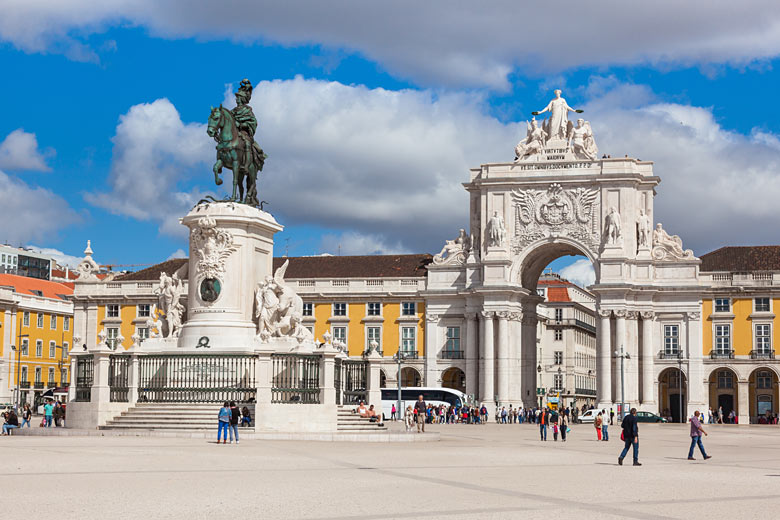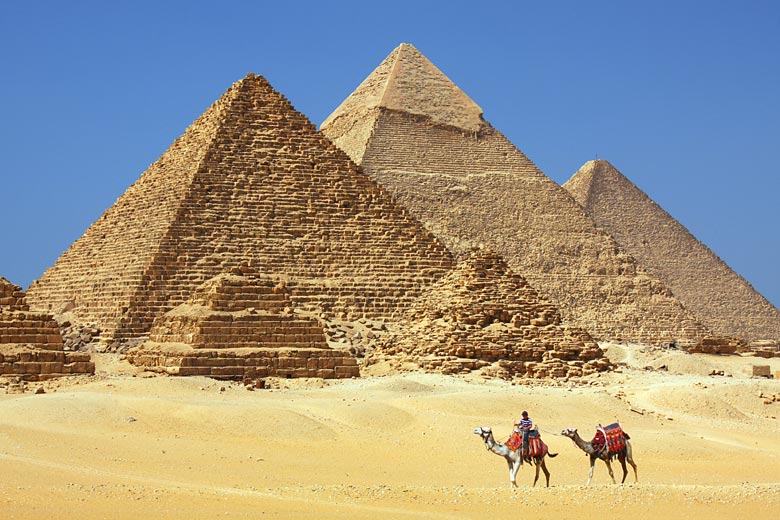7 places to begin exploring beautiful Burgundy & Provence
Head to the south of France* to follow the flow of the Rhône and Saône rivers and discover exquisite food and drink, astonishing history and fascinating culture in some of the regions' most well-known towns and cities under the warm Mediterranean sun.

We're talking Roman ruins, locally-grown wines, unrivalled artistic heritage and so much more.
Getting to southern France: browse the current selection of great value river cruise itineraries through Burgundy and Provence with Avalon Waterways*.
Beaune
Picture-perfect Beaune is the capital of Burgundy wine country and getting there will take you through world-famous wine regions, such as Puligny-Montrachet, where the vines traversing the countryside produce bottles totalling four-figure sums.
The town has an old-world aristocratic vibe, which is no surprise when you learn that it's been the seat of the Duke of Burgundy since the 15th century. Its cobbled streets are awash with wine cellars where you can sample and buy, and markets to browse.
The feather in Beaune's cap is the beautiful Hôtel-Dieu Museum or Hospices de Beaune. This hospital for the poor was founded in 1443 and features stunning Gothic architecture and a dazzling polychrome roof which make it feel more like a palace. Take a guided to explore how and why the sick were welcomed, and the secrets of its kitchens and apothecary.
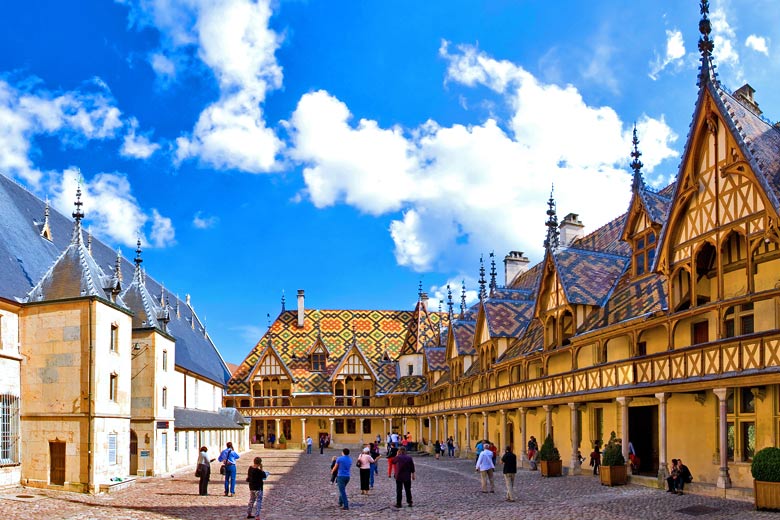
Hospices de Beaune also has a renowned wine estate, the fruits of which are sold off in November at a friendly wine auction, which is just one of many fares and festivals the town hosts throughout the year.
Châteauneuf-du-Pape
No trip to the region would be complete without a vineyard visit and Châteauneuf-du-Pape should be at the top of your list.
Barely more than a village in the Rhône Valley* about 12 km north of Avignon, it has been producing world-famous wine since the popes of Avignon, who used its now ruined castle as their summer residence, planted vines in the 14th century.
The quaint medieval lanes are full of Degustation Gratuite, basically wine caves, where you taste for free, but it's worth getting the full experience while you're in town.
Many local producers open their estates for tours and tastings, and a wander among the vines will bring a new appreciation of the place and its flavours. Top it off with a visit to the Museé du Vin for a peek at the ancient tools of the trade, and an amble around the small art galleries, artisan workshops and chocolatiers.
Arles
Until recent times, Arles has lagged behind its neighbouring towns and cities in welcoming tourists, despite being the home of two hugely famous residences: Vincent van Gogh's unassuming Yellow House, the home and studio he shared with Paul Gauguin, and the hospital in which he was institutionalised after his moment of ear-cutting madness, both of which he famously painted.
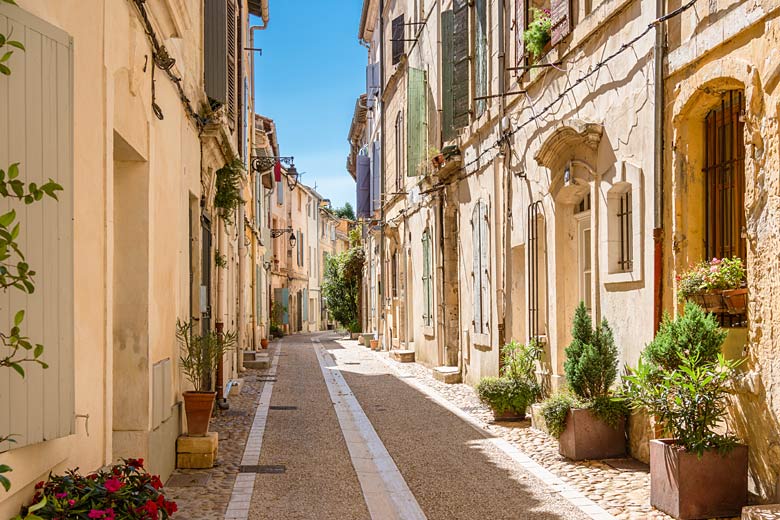
Take a gentle wander through the twists and turns of its streets past its ruins, galleries, boutiques and café bars, and, sooner or later, you'll happen upon the Foundation Vincent van Gogh, which celebrates the artist's work.
The artist extraordinaire wanted the town to be a haven for the arts and with the 2021 opening of the LUMA Arles, a 20-acre arts complex on the town's eastside, his dream has finally become a reality.
In addition, as a seat of Roman Gaul, Arles is full of the splendour of the ancient world, including a 2,000-year-old amphitheatre that sits in the centre of town, a UNESCO-protected area, like a mini-colosseum.
Viviers
Head off the tourist trail and get a taste of local life in the small walled city of Viviers, which sits on the right bank of the Rhône.
You can expect to be welcomed with endless 'bonjours' as you wander this under-explored centre which, as a religious and administrative capital of the region, has several sites of historical importance.
Follow the walking route to the Town Hall, situated in the former Bishop's Palace, the flamboyant Cathedral of St Vincent and the 16th-century Knights' House with its Renaissance façade.
Climb to the hilltop Belvédère de Châteauvieux and you'll find several viewpoints over the town and Rhône Valley.
Orange
Packed with cultural capital, a visit to the city of Orange is a sophisticated affair. Most famous as the host of Europe's most impressive Roman site, the only intact 1st-century amphitheatre, you can take a tour or head up to Parc de la Colline-Saint-Europe on the hill for great views over the town and theatre.

Events are held at the amphitheatre in summer, transporting you back to the ancient world on a balmy evening.
Fine dining abounds in Orange's colourful streets, so make sure you take a tasty pitstop while you're checking out its other charms, such as the 19-metre-high and wide and 8-metre thick Arc de Triomphe, a Roman monument decorated with reliefs celebrating victories, and the Musée d'Art et d'Histoire.
Lyon
France's third-largest city might not be Paris, but Lyon's little-known and revamped Renaissance Old Town is well worth exploring, especially its traboules, hidden passageways that weave between courtyards and through buildings.
A French industrial and banking powerhouse, Lyon has outstanding museums and galleries, excellent shopping and an air of je ne sais quoi. Food is also foremost: Lyon has more than 20 Michelin-starred restaurants and many bouchon, traditional Lyonnaise restaurants serving local fare.
Avignon
Historic majesty comes in big doses in Avignon. During the 14th century this ramparted town was the seat of Catholic popes and, as such, the centre of Christianity.
The city remained under papal rule until it joined France in the 18th century, so there is splendour in spades at the Palais des Papes, the papal palace that offers a snapshot of what the religious life was really like.
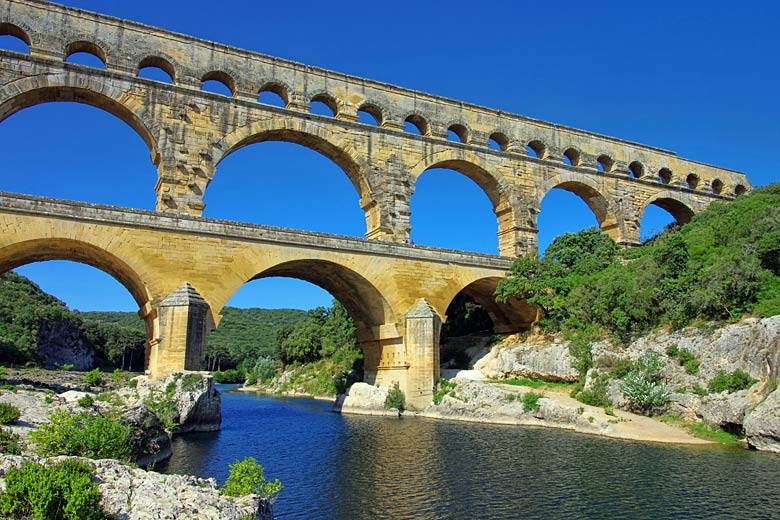
The Pont du Gard, a Roman masterpiece spanning the River Gardon, meanwhile, offers mind-boggling feats of engineering to admire.
But it's not all about the past in Avignon. Head there in July for the Festival d'Avignon, a month-long arts extravaganza that rivals the Edinburgh Festival Fringe for its capacity to engulf the town. But, unlike Edinburgh, Avignon celebrates creativity under the Mistral-cooled Mediterranean sun.
Climate in Burgundy & Provence
| Jan | Feb | Mar | Apr | May | Jun | Jul | Aug | Sep | Oct | Nov | Dec | |
|---|---|---|---|---|---|---|---|---|---|---|---|---|
| Maximum daytime temperature °C | ||||||||||||
| Hours of sunshine (daily) | ||||||||||||
| Days with some rainfall |
The above shows the climate in Lyon. Find out more about conditions across the country in our complete guide to the climate in France.
Ready to explore southern France? Don't miss the chance to browse the latest offers on river cruises with Avalon Waterways.
More about France
- Overview
- Best time to visit
- Weather by month
- 5-day weather forecast
- Destinations
- Travel advice
- Deals & discounts
France by month
Jan Feb Mar Apr May Jun Jul Aug Sep Oct Nov Dec
Explore holidays in the sun for less
- Beach holidays
- Family holidays
- City breaks
- Summer holidays
- Winter sun holidays
- Holiday offers
- Top travel brands
- Airlines & flights
- Discount hotels
- Airport parking deals
- TUI
- Jet2holidays
- easyJet holidays
- Love Holidays
- Black Friday sales
Airport parking
- Manchester Airport
- Stansted Airport
- Bristol Airport
- Luton Airport
- Birmingham Airport
- Edinburgh Airport
- Gatwick Airport
- Glasgow Airport
- Newcastle Airport
Airport lounges
- Manchester Airport
- Birmingham Airport
- Bristol Airport
- Edinburgh Airport
- Glasgow Airport
- Heathrow Airport
- Newcastle Airport
- Stansted Airport
- Gatwick Airport
Be inspired
Get your weekly fix of holiday inspiration from some of the world's best travel writers plus save on your next trip with the latest exclusive offers
We promise not to share your details





























